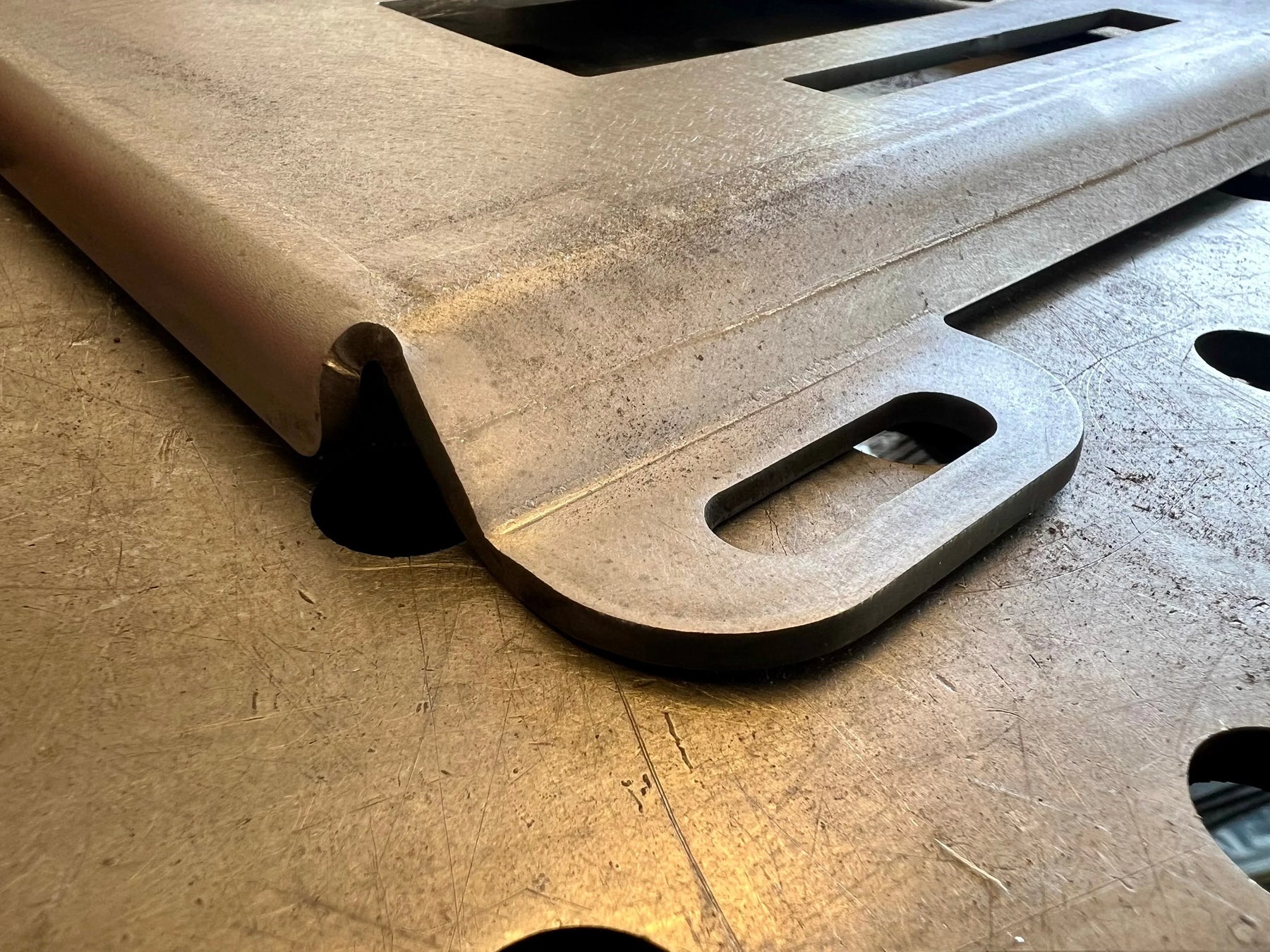
Bending Metal: How Thickness Impacts Your Custom DXF Projects
When you download a DXF file from BocoCustom.com to create custom metal parts, you’re starting a journey to bring your design to life. These files provide precise instructions for CNC machines, laser cutters, or plasma cutters. However, the thickness of the material plays a critical role in the metal bending process. Ignoring this can lead to inaccurate bends or damaged equipment. In this post, we’ll explore why thickness matters when shaping metal and share tips for success.
Why Thickness Matters in Bending Metal
Shaping metal involves deforming it to achieve a desired form while maintaining structural integrity. The thickness of the material significantly impacts this process. Here’s why:
Allowance and Deduction when Bending Metal
Thickness affects bend allowance—the material needed for a bend—and bend deduction, which accounts for stretching during the process. Thicker materials require more force and a larger bend radius. Your DXF design must reflect these factors to ensure accurate final dimensions.
Minimum Radius when Bending Metal
Each material has a minimum bend radius, often a multiple of its thickness. For example, mild steel needs a radius of at least 1x its thickness to avoid cracking. Thinner materials, like 0.5mm stainless steel, allow tighter bends, while thicker ones, like 3mm aluminum, need a larger radius. Ensure your DXF file’s bend radius aligns with your material’s thickness.
Springback Effect
After bending, metal slightly “springs back” due to elasticity. Thicker materials show more springback, requiring over-bending to achieve the desired angle. Your DXF design and setup should account for this based on material thickness.
Tooling and Equipment Limits
Forming thicker materials demands more force, which can strain equipment. A 1mm steel sheet bends easily on a small press brake, but a 5mm sheet may need industrial-grade tools. Verify your equipment’s capacity matches the thickness to avoid damage.
Tips for Bending Metal from DXF Files
To successfully shape parts cut from DXF files, follow these practical tips:
-
Choose the Right Thickness: Select a thickness suited to your project. Thin materials (0.8mm–1.5mm) work for lightweight or decorative parts, while thicker ones (3mm–6mm) suit heavy-duty components. Confirm the DXF file matches your chosen thickness.
-
Verify Bend Radius: Check that the DXF file includes bend lines and a suitable radius for your material thickness. For aluminum, use a radius of 1–2x the thickness. Contact BocoCustom.com for clarification if needed.
-
Calculate Bend Allowance: Use the formula: BA = (π/180) × Bend Angle × (Radius + K-factor × Thickness). The K-factor (0.3–0.5) varies by material and method, ensuring accurate part dimensions after shaping.
-
Test with a Sample: Test metal bends on a scrap piece of the same thickness to confirm radius, springback, and tooling setup. This prevents material waste.
-
Consult Material Properties: Materials like aluminum form easier than stainless steel of the same thickness. Review data sheets or consult BocoCustom.com to ensure DXF compatibility.
Common Mistakes to Avoid When Shaping Metal
-
Ignoring Thickness in DXF Design: Using a DXF file not optimized for your material thickness can lead to parts that don’t fit. Verify bend parameters match your material.
-
Overlooking Equipment Limits: Shaping thick material on underpowered tools can damage equipment. Check your machine’s tonnage rating against the thickness.
-
Neglecting Springback: Failing to adjust for springback can result in incorrect angles. Over-bend slightly, especially for thicker materials.
Conclusion
Bending metal from DXF files downloaded from BocoCustom.com requires careful attention to metal thickness. By understanding its impact on bend allowance, radius, springback, and equipment needs, you can avoid mistakes and create high-quality parts. Verify your DXF file, test your setup, and consult material guidelines for success. Ready to start bending metal? Visit BocoCustom.com to download your DXF file and bring your vision to life!
Visit bococustom.com to explore our latest products and see how our commitment to revisions makes a difference!
